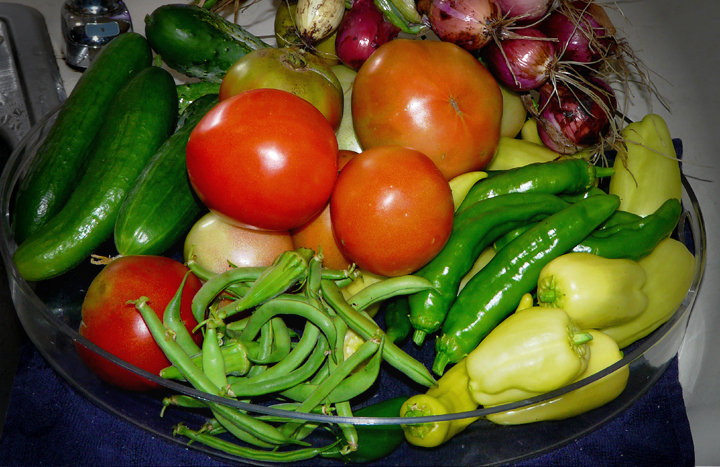
We know this subject isn't insurance related but if you’re looking for trends, food gardening is the hottest trend in home gardening right now.
The “why” is easy to figure out: The COVID-19 pandemic and its far-reaching consequences. Our economy has taken a huge hit, leaving us to seek ways to lower our grocery bills.
Naturally, “growing our own” can help our pocketbooks immensely versus buying all of our food from the grocery store. Another plus is we want to know that the food we’re putting in our bodies is as healthy as possible.
But the best part is, homegrown food simply tastes better than anything you can buy at the store.
Joe Lamp'l, the host and executive producer of the award-winning PBS television series Growing A Greener World, offers these time-tested tips that will help ensure success, whether you’re a newcomer to vegetable gardening or a seasoned veteran.
Location is key
Since most vegetable plants do best in full sun, find a location that gets at least six hours of sun each day, if possible. Plan your garden accordingly, so as to place the tallest plants where they don’t shade the smaller ones.
It’s all about the soil
The best soil suitable for vegetables includes lots of compost and organic matter such as composted leaves and ground or shredded, aged bark. Whatever you’re starting with, incorporate enough organic material so that the amended soil is neither sandy nor compacted. A sure thing is conducting an inexpensive soil test.
Water wisely
For most vegetable plants, one inch of water per week, which includes any natural rainfall, is adequate. The most efficient and productive way to irrigate is by using soaker hoses and drip lines. These deliver water slowly, on target allowing roots time to absorb the moisture and soil to adequately hydrate and helps keep foliage dry.
Use mulch
Add a three-inch layer of any organic mulch around your plants and over the irrigation lines if possible. Mulch will insulate the soil, helping to keep it cooler in summer and warmer in winter. It also helps retain moisture, suppress weeds and acts as a protective barrier from diseases splashing up onto the plants from the soil. And besides, mulch looks great in the garden.
Use patience with pest control
Although pests are usually a given at some point in any vegetable garden, by exercising patience, nature will usually take care of the problem. After all, of all the insects in your garden, only about 3% are actually harmful pests. As long as you practice the steps mentioned so far, you’ve already taken adequate measures to promote the growth of healthy plants which are better able to stand up to potential pest invasions.
Don’t over fertilize
Too much fertilizer, especially nitrogen (the first number on the fertilizer package) can promote plenty of lush green growth at the expense of less fruit and a smaller harvest. Excessive fertilizer can also be harmful to your plants and the soil.
Getting started
We know what you’re thinking. “I still don’t know how to plant a vegetable garden? Who’s going to teach me, where am I going to learn how?”
Your resources are too numerous to name. We’re sure you have family and friends who have been gardening for years, probably many who have shared their fresh-grown produce with you. You can talk to your local feed and seed store employees; they sell gardening supplies and can tell you how to go about putting in your garden. Talk to the local County Agents Office. There you’ll find a wealth of information from trained-in-the-field experts. Others plant by the trusty Almanac and that continues to be a trusty source.
And of course, Google it, paying attention to your locale and the growing seasons!
Planting time is here, daylight’s a burning and a bountiful harvest awaits!
